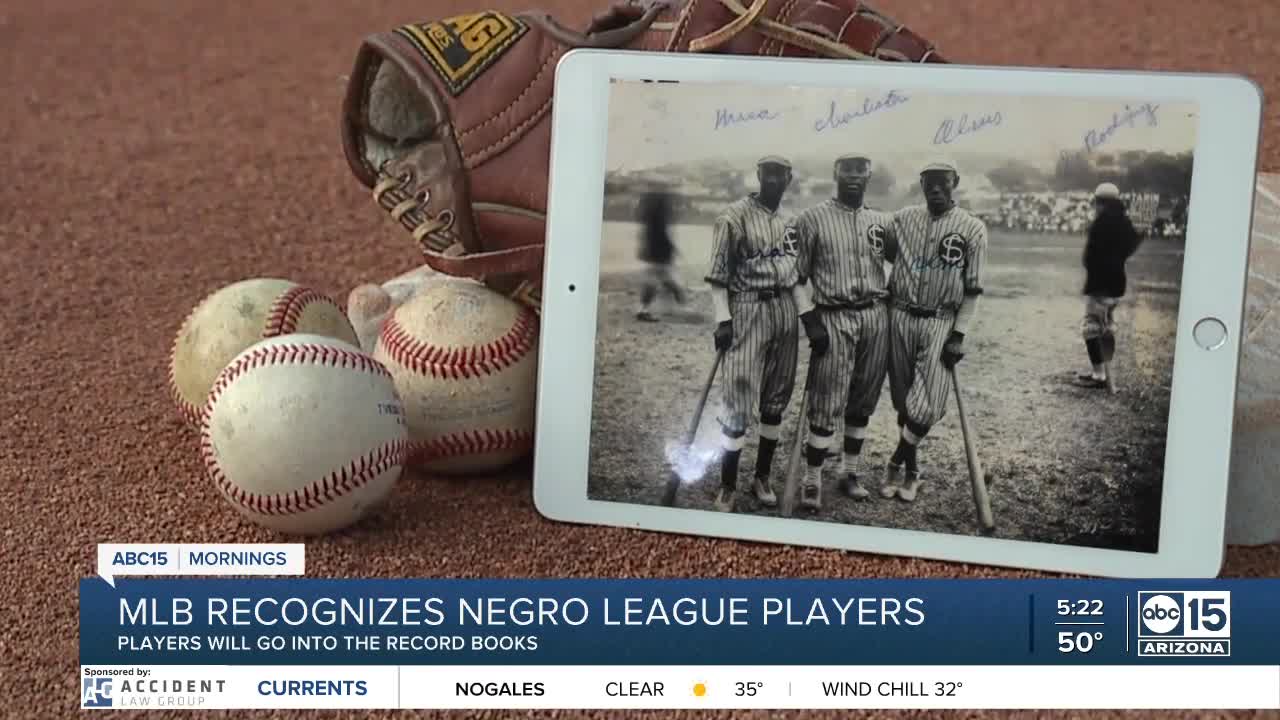As we head into Spring Training season here in Arizona, Major League Baseball is making history by finally recognizing Negro League baseball players as "Major League." This is a huge deal because it finally gives Negro League players credit for their contribution to the game, not just in words, but in the record books as well.
Some names you know: Jackie Robinson, Hank Aaron, and pitching legend Satchel Paige. But there are hundreds of Negro League baseball players that have lived in the unseen shadows of history, until now.
"He was the most popular player in Black baseball."
Phoenix author, Jeremy Beer, wrote the book on Oscar Charleston, one of the first Negro League players to earn a level of fame.
"Like a left-handed Mike Trout," Beer said in comparing Charleston's game. "I think he was built similarly to Mike Trout. Very fast. He was a great fielder, a sparkling defensive center fielder, and he could hit," he said.
After serving in the Army's all-Black Twenty-Fourth Infantry, known as Buffalo Soldiers, Charleston played for a team in Manila before moving back home to Indianapolis in 1915 to play for the Negro League club, The Indianapolis ABC's.
The hard-hitting center fielder wasn't just celebrated by the Black community, he also earned the respect of white players at the time.
"They played MLB players a lot." Beer said. "I don't think people realize that. They played MLB players in pre-season and post-season exhibition contests," he said.
So what does being tagged "major league" mean?
It means Negro League baseball players will finally be recognized as professional players on the same level as past and present MLB players, and their statistics will be added to the record books.
"No sport holds its statistics more dear than the game of baseball does," said Scott Bush, CEO of the Society For American Baseball Research.
For decades, his Negro League Committee has been working to secure the Major League designation, but he says in order to add the Negro League stats to the official record, you have to find them first, and that's no easy task.
"The record-keeping from the Negro League was difficult to compile because a lot of times newspapers were not publishing box scores. They may have covered the game, and there could be a game story, but if a box score didn't accompany it, it created challenges when it comes to compiling the overall statistical record," Bush said.
And because statistics are such a big part of baseball history, we asked, which well-known records may change when Negro League players are added to the books?
"For example, Ted Williams, for the longest time has been known as the last Major League hitter to bat 400 in a season. That is very likely to change," Bush said. "I think we will not see a ton of change in career records," he said.
But beyond the numbers, it's the undeniable talent that jumps off the page, and the incredible stories of overcoming day-to-day racism just to take the field that inspires.
"It was not an easy life," said Dr. Raymond Doswell, Vice President and Curator of the Negro League Baseball Museum in Kansas City, Missouri. "You had to love it to go through some of these things," he said.
Doswell says another Negro League player that can't be ignored is Josh Gibson. The catcher and slugger dominated in his day and could change some current MLB hitting statistics.
We'll hear more from Doswell as we go deeper into the everyday lives of these Negro League players and the racism they had to overcome in the Jim Crow South in part two of this series.



